
Porsche 918 Spyder Hybrid Video Performance Review
Published by Autobahn Buzz (Porsche 918 Spyder Hybrid)
Driving trials at the Nürburgring:.
Experiencing severe efficiency at the “Green Hell”.
The Porsche 918 Spyder is revealing exactly what is technically viable today and is redefining performance limitations. The 918 Spyder has reached a vital stage in its advancement with tuning of its vehicle dynamics at the Nürburgring.
systems related to vehicle dynamics in the 918 Spyder. Of main relevance right here is the interplay between the active PASM damping system, completely variable aerodynamics, adaptive rear axle steering and the 3 motors of the parallel full-hybrid drive system. At the same time, the “Ring” motorsport course demands optimal loads from all elements, specifically drive and body components.
The Porsche 918 Spyder Hybrid has the potential to break many records. Even more essential: the 918 Spyder surpasses previous designs and rivals by far in its efficiency. In sum: maximum driving fun with minimal fuel consumption.
The 918 Spyder is currently equaling its function as the genuine successor to the Carrera GT, and it clearly exceeds that vehicle’s driving efficiency– in terms of both acceleration and race track performance: Under three seconds for the sprint from zero to 100 km/h (Carrera GT: 3.9 seconds) and at least ten seconds quicker than the best time for the Carrera GT of 7:32 mins on the North Loop.
Carbon monocoque guarantees lightweight design with a reduced center of gravity.
The Porsche 918 Spyder Hybrid makes use of the best state-of-the-art technologies to attain its top performance. The car’s unladen weight of under 1,700 kg– an excellent low weight for a hybrid automobile of this performance class– is largely attributable to this idea. This outcomes in a slightly rear end biased axle load distribution of 57 per cent on the rear axle and 43 per cent on the front axle, combined with an exceptionally low center of gravity, which is perfect for driving dynamics.
Chassis with race automobile genes and rear-axle steering.
The Porsche 918 Spyder’s multi-link chassis is inspired by motorsport design, matched by extra systems such as the PASM adaptive shock-absorber system and rear-axle steering. Generally, this incorporates an electro-mechanical modification system at each rear wheel. The adjustment is speed-sensitive and performs steering angles of a few degrees in each direction. The rear axle can for that reason be guided in the same instructions as the front wheels or in opposition to them. At reduced rates, the system guides the rear wheels in a direction reverse to that of the front wheels. This makes cornering more direct, faster and more exact, and it reduces the turning circle. At higher rates, the system guides.
the rear wheels in the same instructions as the front wheels. This lessens “pushing” of the vehicle’s rear end when altering lanes rapidly. The result is steady and extremely protected handling.
Variable aerodynamics for different driving modes.
A system of adjustable aerodynamic elements guarantees special and changeable aerodynamics; its layout is instantly varied over three modes– varying from ideal effectiveness to optimum down force– and is tuned to the operating modes of the hybrid drive system. 2 of these modes are pertinent for driving trials on the Nürburgring: In “Performance” mode, the retractable rear wing is set to a high angle to generate high down force at the rear axle.
In “Sport” mode, the aerodynamic control system reduces the attack angle of the rear wing rather, which makes it possible for a greater top rate. The aerodynamic flaps in the underfloor location close, which likewise reduces aerodynamic drag and boosts attainable vehicle rates. In “E” mode, the control is configured entirely for reduced aerodynamic drag; the rear wing and spoiler are retracted, and the underfloor flaps are closed.
 When the vehicle is quit and in the “Performance” mode, they are opened for maximum cooling air intake. In the two various other modes, they stay closed whenever feasible to keep aerodynamic drag low.
When the vehicle is quit and in the “Performance” mode, they are opened for maximum cooling air intake. In the two various other modes, they stay closed whenever feasible to keep aerodynamic drag low.
From comfy to race-ready: five modes for 3 motors.
The core of the 918 Spyder idea is its circulation of propulsive power among the three power units; their teamwork is controlled by an intelligent management system that offers.
It ideally balances the various requirements in between n efficiency-oriented driving profile and maximum performance. To best make use of these different methods, the Porsche designers defined 5 operating modes that could be triggered via a “map switch” on the steering wheel, just like in motorsport vehicles.
Quiet and sophisticated: “E-Power”.
When the vehicle is begun up, the “E-Power” mode is the default operating mode as long as the battery is sufficiently charged. In ideal conditions, the 918 Spyder could cover over 25 kilometres on purely electric power. In this mode, the combustion engine is just utilized when needed: maximum engine power is readily available at a minute’s notice by the kick-down function. The vehicle immediately switches to hybrid mode if the battery’s cost state drops below a set minimum worth.
Comfortable and reliable: “Hybrid”.
In “Hybrid” mode, the electric motors and combustion engine work in varied configurations with a concentrate on optimal efficiency and minimum fuel usage. Using individual drive elements is modified as a feature of the current driving situation and the desired efficiency. The hybrid mode is typically made use of for a fuel economy-oriented driving style.
Dynamic and sporty: “Sport Hybrid”.
In more powerful circumstances, the Porsche 918 Spyder Hybrid picks the “Sport Hybrid” mode for its power sources. The combustion engine now runs continuously and provides the primary propulsive force. In addition, the electric motors offer support through electric increasing when the operating point of the combustion engine could be enhanced for higher effectiveness. The focus of this mode is on performance and a stylish driving style.
Main propulsion: the racecar’s eight-cylinder engine.
The primary source of propulsion is the 4.6-litre, eight cylinder engine that produces over 580 hp of power; it was acquired straight from the power unit of the successful RS Spyder, which clarifies why it can deliver engine speeds of up until 9,000 rpm. Like the RS Spyder’s race engine, the 918 Spyder power unit includes dry-sump lubrication with a separate oil tank and oil extraction. To conserve weight, elements of the air filter box and air induction are made of carbon fiber enhanced polymer. Additional considerable lightweight design measures has actually resulted in such functions as titanium connecting rods, thin-wall, low-pressure casting on the crank case and the cylinder heads, a high-strength, lightweight steel crankshaft and the extremely thin-walled alloy steel exhaust system. Weight and performance optimizations achieve a power output per litre of approx. 126 hp/l, which is significantly greater than that.
of the Carrera GT (106 hp/l) and superior for a naturally aspirated engine.
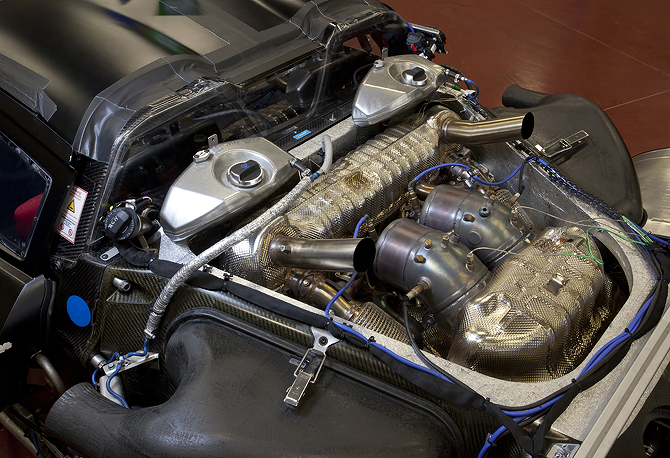 A system of modifiable aerodynamic elements guarantees unique and changeable aerodynamics; its design is immediately varied over three modes– varying from ideal effectiveness to maximum down force– and is tuned to the operating modes of the hybrid drive system. 2 of these modes are pertinent for driving trials on the Nürburgring: In “Performance” mode, the retractable rear wing is set to a high angle to generate high down force at the rear axle. When the automobile is begun up, the “E-Power” mode is the default running mode as long as the battery is adequately charged. The hybrid mode is typically utilized for a fuel economy-oriented driving style.
A system of modifiable aerodynamic elements guarantees unique and changeable aerodynamics; its design is immediately varied over three modes– varying from ideal effectiveness to maximum down force– and is tuned to the operating modes of the hybrid drive system. 2 of these modes are pertinent for driving trials on the Nürburgring: In “Performance” mode, the retractable rear wing is set to a high angle to generate high down force at the rear axle. When the automobile is begun up, the “E-Power” mode is the default running mode as long as the battery is adequately charged. The hybrid mode is typically utilized for a fuel economy-oriented driving style.
The focus of this mode is on efficiency and a stylish driving style.
Porsche 918 Spyder Hybrid Specifications:
Body: Two-seat Spyder; carbon fibre reinforced plastics (CFRP) mono –
coque interlocked with CFRP unit carrier; two-piece Targa roof;
fixed roll-over protection system.
Drivetrain: Parallel full hybrid; 4.6-litre V8 mid-engine with dry-sump lubrication; hybrid module with electric motor and decoupler; electric motor with decoupler and gear unit on front axle; auto start/stop function; electrical system recuperation; four cooling circuits for motors, transmission and battery; thermal management.
Engine power: 580 hp (426 kW) at 8,500/min (V8 engine)
95 kW (hybrid module on rear axle)
85 kW (electric motor on front axle)
795 hp (combined)
Max. torque: 500 Nm at 6.500/min (V8 engine)
780 Nm from 1,000/min to 4,000/min (combined)
Maximum Revs: 9,000 rpm
Power output per l: 126 hp/l (V8 engine)
Weights: Curb weight, DIN 1,700 kg
(Weissach package: 1,665 kg)
Dimensions:
Length 4,643 mm
Width 1,940 mm
Height 1,167 mm
Wheelbase 2,730 mm
Track width front 1,664 mm
rear 1,612 mm
Luggage compartment capacity, VDA ~ 110 l
Fuel tank capacity 70 litres
Energy supply: Lithium-ion battery with 6.8 kWh capacity (BOL nominal), 200 kW
maximum power and mains-compatible plug-in charger.
Performance: Top speed 325 km/h – Purely electric 150 km/h
Acceleration:
0 – 100 km/h 3.0 sec
0 – 200 km/h 9.0 sec
0 – 300 km/h 27.0 sec
Fuel Consumption (NEDC): Total 3.0 l/100 km / Estimated 78 MPG
CO2 emissions: Total 70 g/km
Range: Purely electric 25 km
Warranty: 4 years

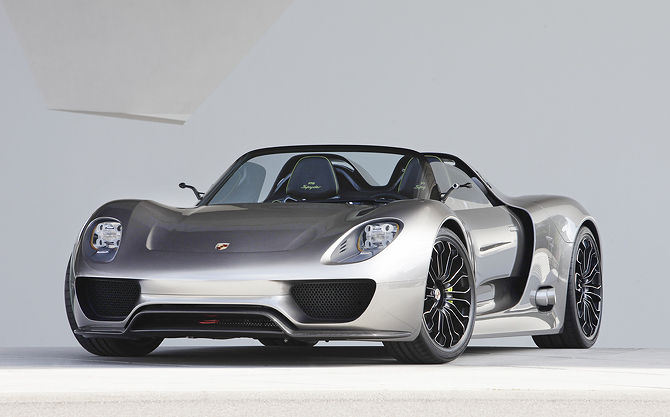

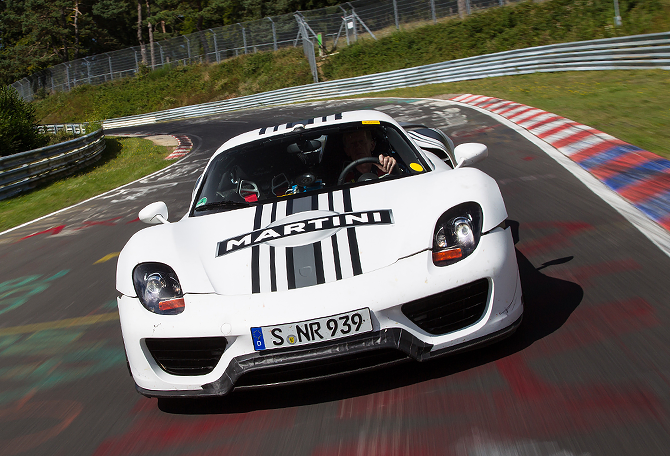
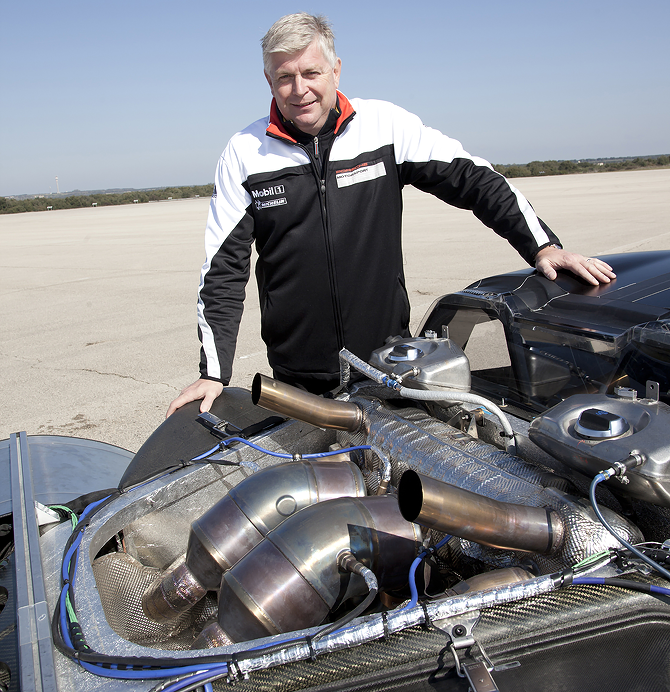
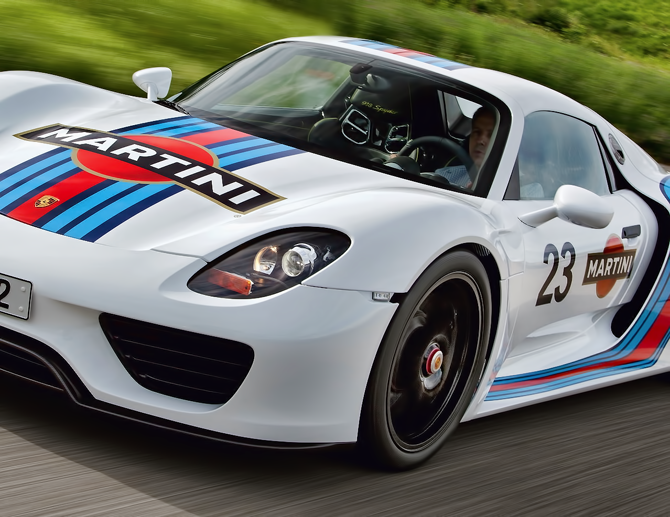
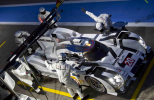


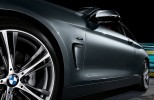
Great review of the 918 Spyder. The video was informative and I enjoyed the photo gallery. I look forward to the next feature from Autobahn Buzz.
Thanks Jack for the remarks. We enjoy to hear feedback from all of our fans. The Porsche 918 Spyder hybrid was especially enjoyable to cover this year.